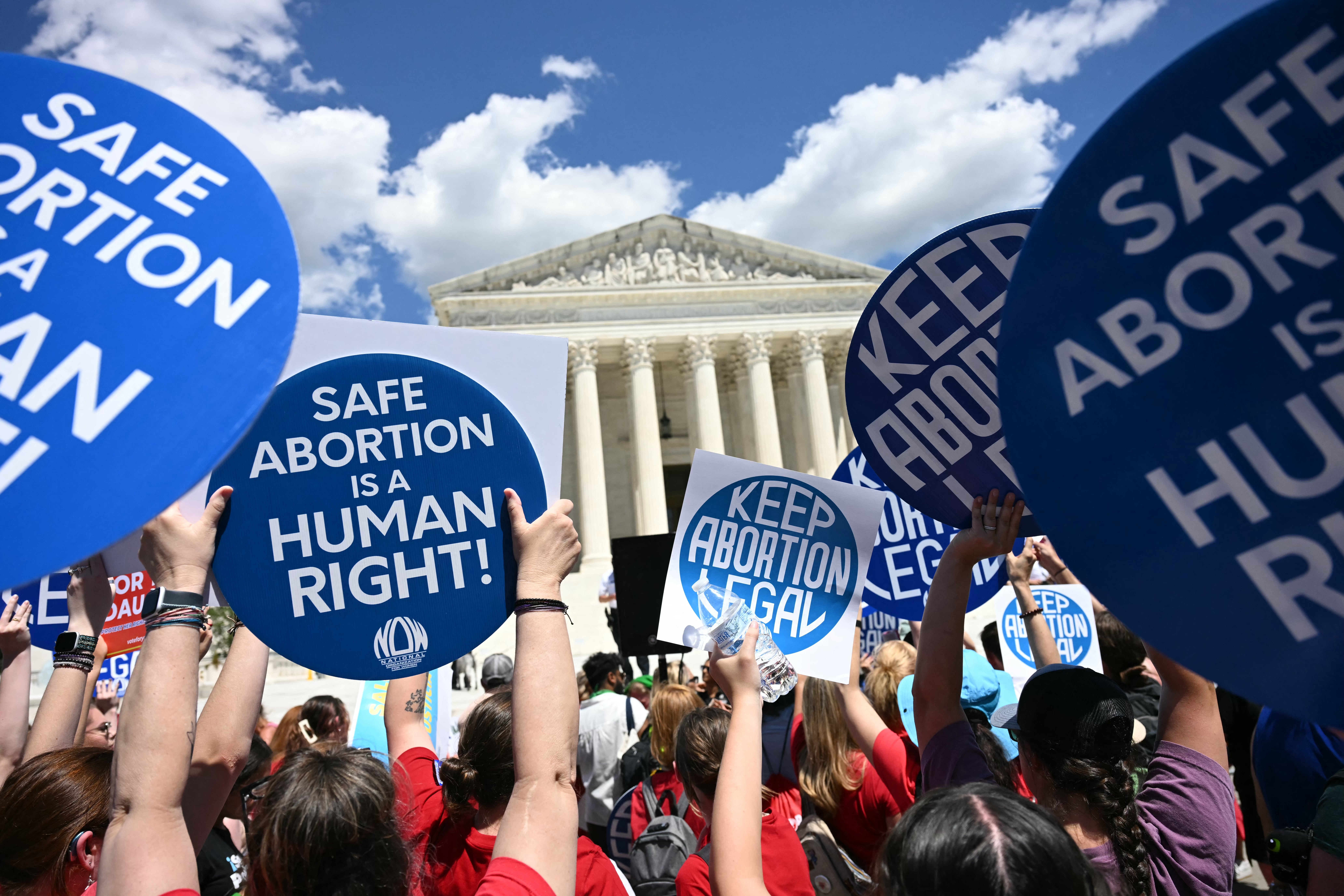States funding anti-abortion clinics have some of highest rates of maternal and infant mortality in US, report finds
At least 21 states use public funds to support anti-abortion clinics, which have grown into a billion-dollar industry
States that fund so-called “crisis pregnancy centers” where pregnant patients are dissuaded from seeking abortions have some of the highest maternal and infant mortality rates in the US, according to a new report from a reproductive health watchdog group.
The “unregulated pregnancy clinic” industry — which encompasses roughly 2,500 to 4,000 sites in all 50 states, most of which are affiliated with anti-abortion groups — is increasingly funded by state legislatures that allocate taxpayer dollars to support them, according to Reproductive Health and Freedom Watch.
That pace of funding has “accelerated” in the wake of the Supreme Court’s 2022 ruling to overturn Roe v Wade, which struck down the constitutional right to abortion care and granted states wide latitude to restrict access.
Money has been flowing into the industry within the last several years, but “direct taxpayer funding is increasing even faster,” according to the report.
At the same time, the industry is working to evade watchdog attempts to understand exactly how those public funds are used, with a significant lack of accounting for a billion dollar industry, according to the report.
Between 2021 and 2024, at least 21 states have funded clinics with taxpayer dollars — all of them anti-abortion states with high rates of maternal and infant mortality above the national average.
Clinic supporters have argued that pregnant patients are provided care to understand the risks of abortion, but abortion rights advocates say that the information is not rooted in any medical or scientific guidance.

While support for such clinics is typically positioned as a response to infant and maternal health needs, only 5 percent of such clinics provide prenatal care, and a majority of clinics “distract and divert pregnant women from the legitimate medical system to promote their own [ideological] ends,” according to the report.
Anti-abortion lawmakers who encourage public funding for crisis pregnancy centers have also turned away public funding for maternal healthcare, the report noted.
For example, in Mississippi, which has the highest maternal mortality rate in the country, with 39.1 deaths per 100,000 births, lawmakers who supported clinic tax credits have also tried to block Medicaid expansion to support postpartum care.
In Arkansas, where maternal mortality rates are 38.3 deaths per 100,000 births, lawmakers introduced legislation to double direct taxpayer funding to clinics — while Governor Sarah Huckabee Sanders rejected that Medicaid coverage.
The state is among only a handful that has not taken advantage of the federal option to extend postpartum coverage from 60 days to 12 months after birth.
Private donations remain the largest source of clinic industry revenue, but a growing number of state legislatures are approving public funds to support the industry.
The report, citing publicly available IRS forms, found that 53 percent of industry-supported clinics reported a 30 percent increase in revenue between 2019 and 2022 — up from $1 billion to more than $1.4 billion within a three-year period.
Roughly 87 percent of that revenue came from private donors and corporations.
But between 2021 and July 2024, state lawmakers approved more than $511 million in taxpayer dollars to crisis pregnancy centers.
In the two years before the Supreme Court’s decision in Dobbs v Jackson Women’s Health Organization, that figure was roughly $184 million, according to the report.
In the years after Dobbs, it surged to roughly $327 million.
Seven states have created new public funding programs within that four-year period, while 11 states increased total funding appropriated for clinics, according to the report. Lawmakers are turning to funding mechanisms like tax credits, sales tax exemptions and government contracts, among others.
The findings follow a wave of anti-abortion laws that followed the Dobbs decision, with 14 states outlawing abortion at any point in pregnancy, while several other states have strict gestational limits — including at roughly six weeks, when most women don’t know they are pregnant.
Anti-abortion laws have threatened access to care for more than 20 million women, according to the Guttmacher Institute. Including states that ban abortion at 12 or 15 weeks of pregnancy, the number of affected women grows to roughly 25 million.
Join our commenting forum
Join thought-provoking conversations, follow other Independent readers and see their replies
Comments
Bookmark popover
Removed from bookmarks